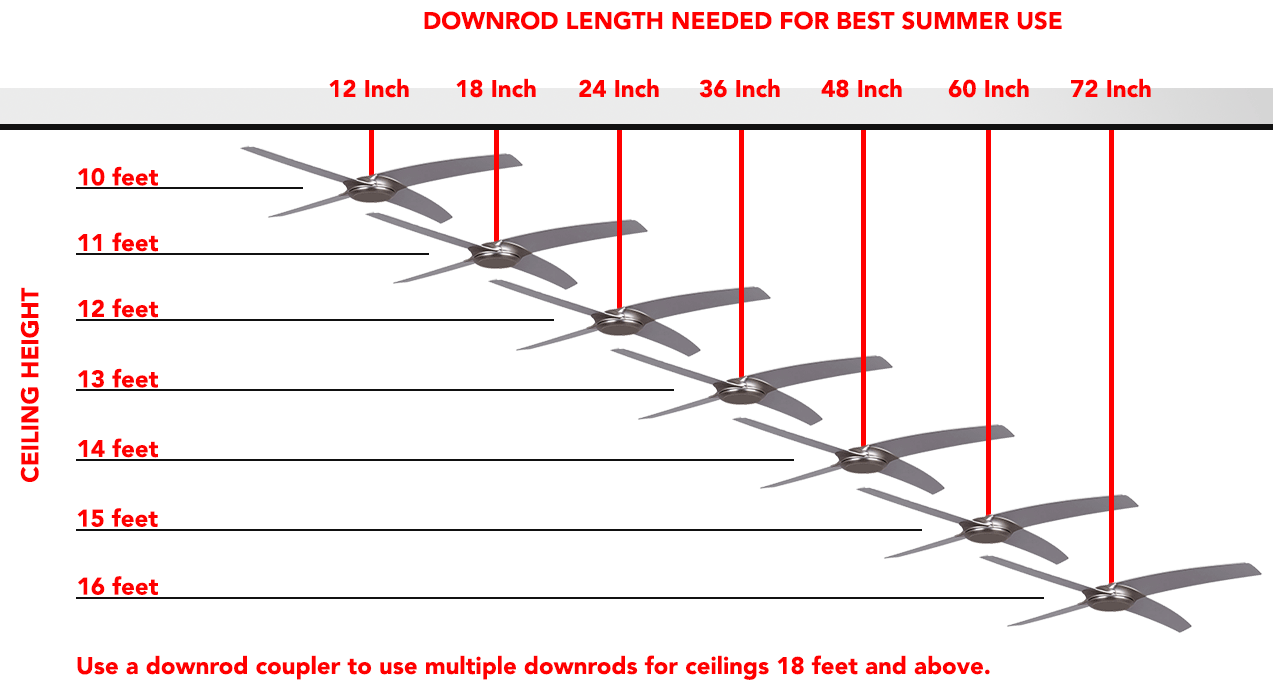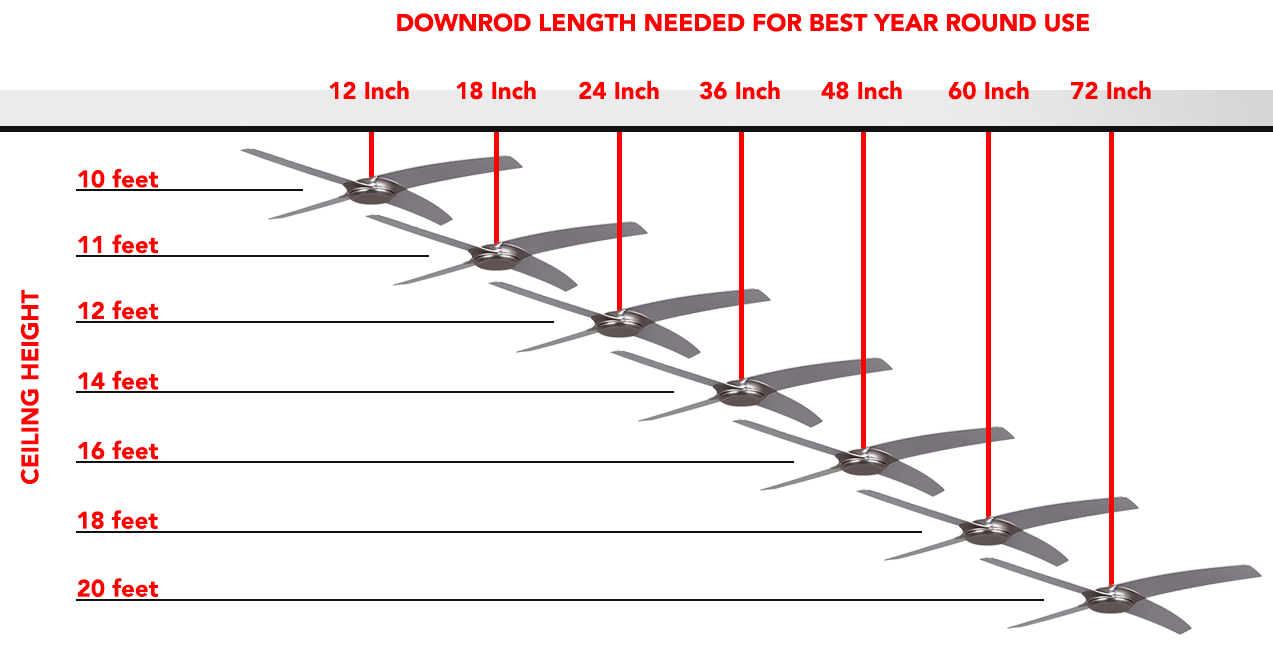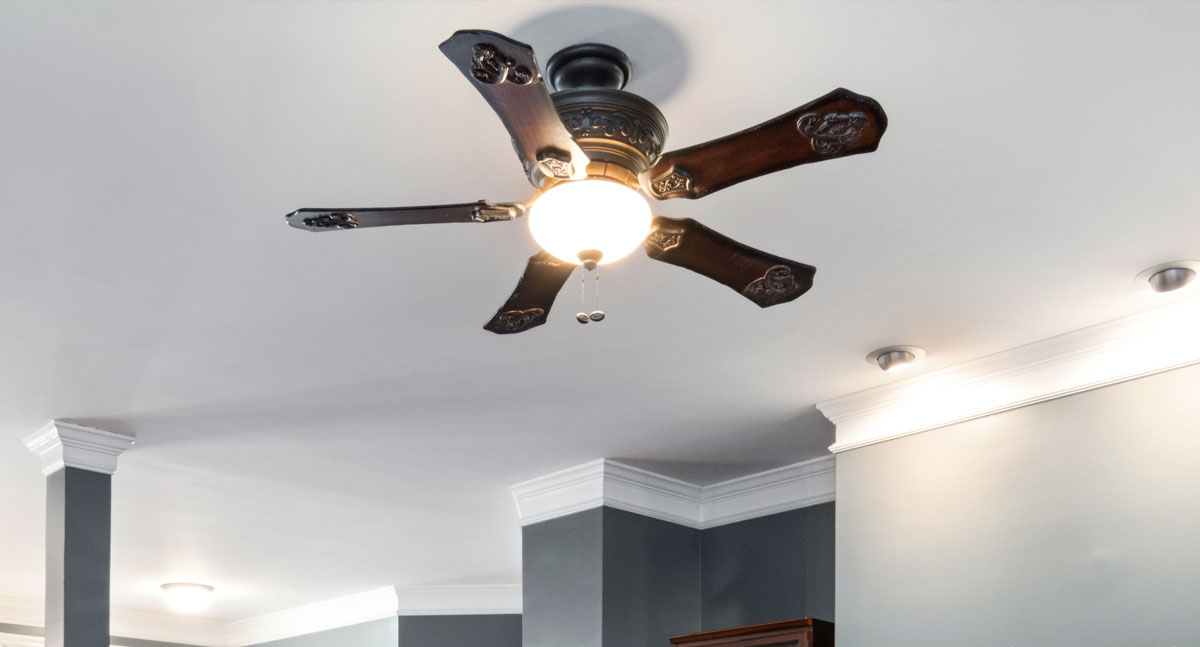Installing a ceiling fan can be a bit tricky. One of the most important things to consider is how low the fan should hang from the ceiling. Under Australian Standard AS 4226 – 2008, Clause 12.5.3 all ceiling fans should be at least 2.1 metres from the floor. If it hangs too low, not only would the fan be non-compliant but it could cause a number of problems, such as decreased air circulation and even structural damage. In this article, we will discuss the ideal distance for your ceiling fan to hang from the ceiling. We’ll also provide some tips on how to choose the right downrod or close mount kit if necessary. So read on to learn more!
What should the ceiling fan height be from the floor?
The ideal ceiling fan height from the floor in Australia should comply with the Australian Standard AS 4226 – 2008, Clause 12.5.3, which stipulates that all ceiling fans must be installed at a minimum height of 2.1 metres (approximately 6 feet 10 inches) from the floor. This regulation ensures adequate clearance for safety and proper air circulation in the room.
What is a ceiling fan downrod?
The downrod is the metal pipe connected to the motor housing by the mounting bracket and stabilises and reduces the potential for vibration. This can in turn help prevent knocking noises and other issues. A downrod also ensures adequate airflow by preventing excessive friction between the ceiling fan blades.
Are ceiling fan downrods universal?
There’s no requirement for ceiling fans to be universal or interconnected between brands. The ceiling fan downrod should be made specifically for use with the specific ceiling fan model to ensure the correct fitting. You should identify which manufacturer and models your fans are using to determine which downrod you are requiring. Models sometimes use specific downrods, but most usually the downrods are compatible with any manufacturer.
Threaded vs Non-Threaded
Both threaded, as well as non-threaded downrods, can be installed on most ceiling fans. The downrods are secured with a securing pin and a screw set that stabilises the downrod and prevent it from twisting.
Ceiling fan downrod length for summer use
Most ceiling fans are hung between eight and nine feet above the floor for summer use, which provides cool air circulation without being too obtrusive. If your ceilings are higher than this, you may need a longer downrod to circulate air in the room properly. Conversely, if your ceilings are lower than eight feet, you may be able to get away with a shorter downrod, or you may even be able to use a close mount kit to bring your fan closer to the ceiling.
For example, if the ceiling height is 14 feet, a 48″ downrod (4 foot) will bring the top of the motor to roughly 10 feet once the mounting hardware has been attached to the ceiling. This will place the bottom of the ceiling fan at 9 feet above ground when everything else is complete.
Also consider that if you are using a ceiling fan for summer use, you will probably have it on at night time when sleeping so you might be better off with a DC ceiling fan compared to an AC ceiling fan given DC fans are quieter.
Whilst you need to keep cool in summer it’s also important to consider that fans can be bad for indoor plants and other household belongings so just keep that in mind.

Image Credit: https://www.modernfanoutlet.com/
Ceiling fan downrod length for winter use
Air movement is important and in winter, you’ll want to reverse the direction of your ceiling fan blades so that they push warm air down into the room. This is typically done by flipping a switch on the motor housing. Circulating air is a key function of standard ceiling fans and since warm air rises, you’ll want to hang your ceiling fan a bit lower in winter so that it can effectively circulate the warm air. We recommend hanging your ceiling fan about seven feet above the floor for winter use.
If the ceiling fan aims to assist with heating during the winter, you’ll want to keep it as close to the ceiling as feasible since if you drop it too low it will be too far below all of that trapped heat that has been pushing against the ceiling. If the exhaust fan is installed too far away from the ceiling, it will not be as efficient in returning heat to the living level.
Optimal heights for year-round ceiling fan usage
The average ceiling height in Australia is 2.4 meters. For ceiling fans, the recommended installation height is at least 2.1m from the floor to the fan blades and at least 300mm from the ceiling.
For those who know the advantages of operating your ceiling fans all year, cut the distance between the two suggested above in half. This will allow your ceiling fan to be as useful throughout the winter months as it will during the summer months. The blades of your ceiling fan should be adjusted to a height high enough to keep the fan up and operating during the winter months, yet low enough to be highly efficient during the summer months.
This will not only keep the fan high enough for it to be functional throughout the colder months, but it will also make your new ceiling fan more aesthetically appealing compared to other fixtures in the room.
To get the best year-round use, follow these three easy steps:
- Measure the total ceiling height.
- Subtract the 8 foot height from the highest point a fan should hang down from a high ceiling.
- Whatever it is, get a downrod that’s as close to half of the number as possible in length.
The purpose is that you may install the unit so it’s low enough to function effectively during the months when you’ll need it to supplement your cooling system, but high enough to be effective when you’ll need it to complement your heating system. Plus, having a fan at these heights looks better.

Image Credit: https://www.modernfanoutlet.com/
Tips for choosing the right downrod
Now that you know how to determine the ideal ceiling fan downrod length, you can start shopping for the right one. Here are a few tips to keep in mind:
- First, measure the distance from the ceiling to the floor so that you know what length of downrod you need.
- Second, make sure to choose a downrod that’s made of high-quality materials such as steel or aluminum.
- Third, be sure to choose a downrod that’s compatible with your ceiling fan model.
- Finally, don’t forget to take into account the ceiling height when choosing a downrod. If you have high ceilings, you may need a longer downrod to properly circulate air in the room and prevent a common issue of no air coming from the ceiling fan.
Proper downrod length for higher than normal ceilings
Some ceiling fan manufacturers suggest lowering the fan to about eight to nine feet from the floor. Although this creates the best cooling effect, sometimes dropping them so much may make it difficult for them to hang over very high ceilings. Dropping the fan too low can reduce the open feeling and provide more headroom than if the room were higher. Ceiling fans can also be helpful during the cold season in retaining the temperature in the rooms.
Conclusion
We hope this article has been helpful in guiding you through the process of choosing the right ceiling fan downrod length and understanding how low your ceiling fan should be. If you have any further questions about ceiling height, downrods or anything related that isn’t covered in this article, please don’t hesitate to reach out to us. We’re always happy to help!


